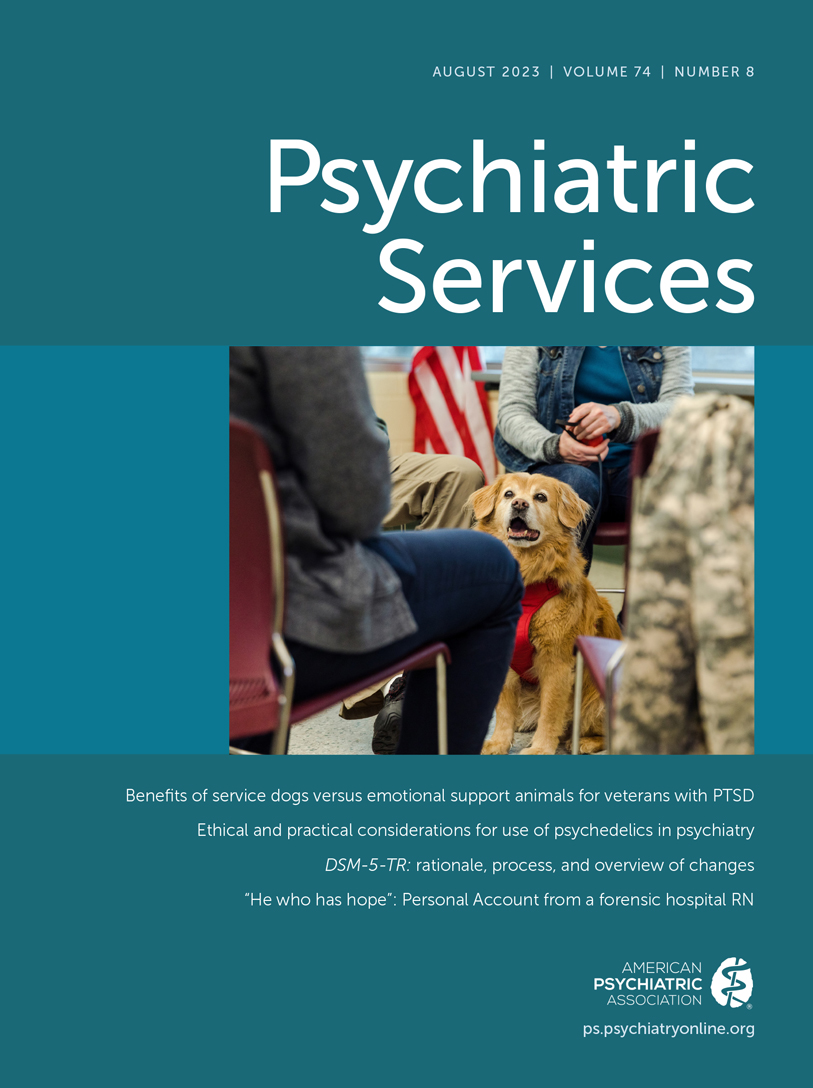Assessing Substance Use Disorder Among Social Security Administration Disability Applicants
Abstract
Objective:
Co-occurrence of substance use disorder and mental illness complicates treatment and is associated with increased disability. However, identification of substance use disorder in populations recently engaged in treatment can be challenging. This study aimed to examine traditional screening tools for substance use disorder and proxy characteristics (i.e., demographic characteristics, behaviors, and diagnoses) as predictors of clinician-observed substance use disorder.
Methods:
The Supported Employment Demonstration, funded by the Social Security Administration, studied 2,960 adults whose applications for disability benefits because of mental illness were recently denied. In a subsample (N=1,354) for whom substance use disorder was determined by community-based teams during follow-up, the authors used logistic regression to identify baseline predictors of observed substance use disorder and compared the sensitivity and specificity of detection by using standardized screening tools (Alcohol Use Disorder Identification Test [AUDIT], 10-item Drug Abuse Screening Test [DAST-10]) with detection via decision trees based on proxy characteristics.
Results:
Using decision trees based on a combination of personal characteristics (sensitivity=0.47, specificity=0.83, area under the curve [AUC]=0.71) or personal characteristics including diagnostic data (sensitivity=0.54, specificity=0.81, AUC=0.72) provided more accurate identification of substance use disorder than using a combination of the AUDIT and DAST-10 (sensitivity=0.34, specificity=0.88, AUC=0.61). Adding the combined AUDIT and DAST-10 substance use disorder indicator to either tree negligibly improved accuracy.
Conclusions:
In populations recently engaged in treatment, for whom standardized substance use disorder screening tools are less accurate than expected, consideration of personal characteristics could improve the detection of substance use disorder essential for treatment planning.
Access content
To read the fulltext, please use one of the options below to sign in or purchase access.- Personal login
- Institutional Login
- Sign in via OpenAthens
- Register for access
-
Please login/register if you wish to pair your device and check access availability.
Not a subscriber?
PsychiatryOnline subscription options offer access to the DSM-5 library, books, journals, CME, and patient resources. This all-in-one virtual library provides psychiatrists and mental health professionals with key resources for diagnosis, treatment, research, and professional development.
Need more help? PsychiatryOnline Customer Service may be reached by emailing [email protected] or by calling 800-368-5777 (in the U.S.) or 703-907-7322 (outside the U.S.).



